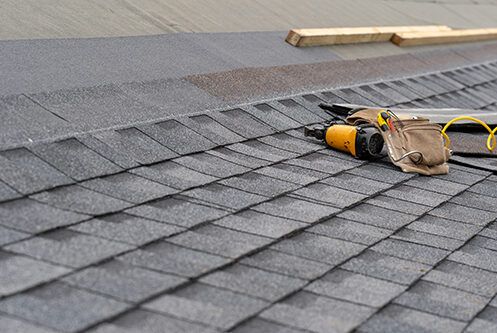The roof on your Coeur d’Alene, ID home is a watertight, multi-layer barrier against the natural elements. Flashing is one of its many components. Found at roof valleys and around exhaust vents, skylights, and chimneys, flashing guards some of your roof’s most vulnerable areas. Read on to learn about the role of roof flashing in leak prevention.
Flashing Protects Your Roof Deck by Diverting Water
Roof valleys and areas with protrusions have the highest likelihood of developing leaks over time. To prevent the ingress of moisture in these spaces, roofers install flashing wherever flat planes and vertical surfaces intersect. Rather than pooling, runoff flows down flashing and onto shingles, and shingle granules route it toward gutters and downspouts. In some areas, flashing also seals critical junctures. To work effectively, flashing must be free of holes and corrosion and have a perfect seal.
Different Flashing Materials and Their Benefits
Most homes have sheet metal flashing. Comprised of alloys like aluminum, zinc, and steel, sheet metal flashing is affordable, durable, and extremely weather-resistant. Depending upon its quality and exact composition, sheet metal flashing generally lasts between 15 and 35 years. Zinc-coated aluminum flashing is low in cost, sturdy, and highly weather-resistant. However, steel flashing is a top choice throughout the nation due to its superior strength and adaptability.
Rubber and Synthetic Flashing
Rubber and synthetic flashing are common in industrial and commercial applications. They’re also sometimes used in residential construction when high pH environments make other options unfeasible.
Lead Flashing
Lead was a popular flashing choice in decades past but is rarely found in new construction. Some roofers install it in small, difficult-to-access areas due to its longevity. In hard-to-maintain spaces, lead flashing provides the longest-lasting leak protection.
Copper Flashing
Copper flashing is the top alternative to alloy-based sheet metal flashing. Copper flashing has intrinsic value and natural antimicrobial properties. It forms a gorgeous patina over time and perfectly complements historic and luxury homes. If you’ve opted for an all-copper roof with matching copper gutters and downspouts, copper flashing is the obvious choice.
Top Flashing Types and How They Prevent Leaks
Flashing is always specific to the area in which it’s installed and the structures it protects. While one flashing style will prevent the ingress of moisture around your skylight, you’ll need something different to protect your roof’s drip edges and valleys. Depending upon the size and layout of your roof and its various protrusions, you likely have:
- Continuous or “apron” flashing at all chimneys and exhaust vents
- Valley flashing at all open valleys
- Counter and base flashing for added protection at protrusions
- Step flashing at roof-to-wall joints
Each of these flashing types limits the risk of standing water by creating a smooth surface that leverages the roof’s natural slope. Installed just where step flashing ends and gutters start, kick-out flashing protects underlying building materials by bridging existing gaps.
What Happens When Flashing Is Damaged?
When flashing is bent, torn, or completely detached by strong winds, heavy precipitation, or the cumulative ravages of time, you may develop leaks inside your home. Discolored ceilings, blistered and peeling paint, and damaged drywall are among the many visible signs of flashing damage. However, not all flashing damage is readily apparent indoors.
If damaged flashing allows moisture to enter your roof decking and underlayment, your roof could become soft and squishy underfoot as its wood elements slowly succumb to mold and wood rot. Damaged flashing can also leave you with a damp, musty attic, indoor mold problems, and raised or curling shingles.
Flashing damage can also cause structural harm to roof protrusions. For instance, if the flashing around your skylight leaks, your skylight may develop dark, permanent stains on its glass or frame, emit drafts, make strange noises during times of heavy precipitation, or develop structural deformations.
How to Keep Your Roof’s Flashing Intact
Age-related wear is a common cause of flashing problems. Flashing can also be damaged by severe weather events or develop progressive, installation-related issues. To avoid these things, it’s important to have your roof’s flashing installed by seasoned roofers who understand the needs and nuances of your property. You should also schedule timely storm damage inspection and repair services following severe weather events and stay current with ongoing roof and gutter maintenance.
We help residents of Coeur d’Alene, ID protect their homes and save cash with top-notch roofing services. We offer residential and commercial roof inspection, maintenance, installation, cleaning, and repair services. We also provide green roofs, cooperative purchasing capabilities, and fluid-applied roof coatings. To schedule an appointment, get in touch with Jimmy's Roofing today!



 #thejimmysWAY
#thejimmysWAY